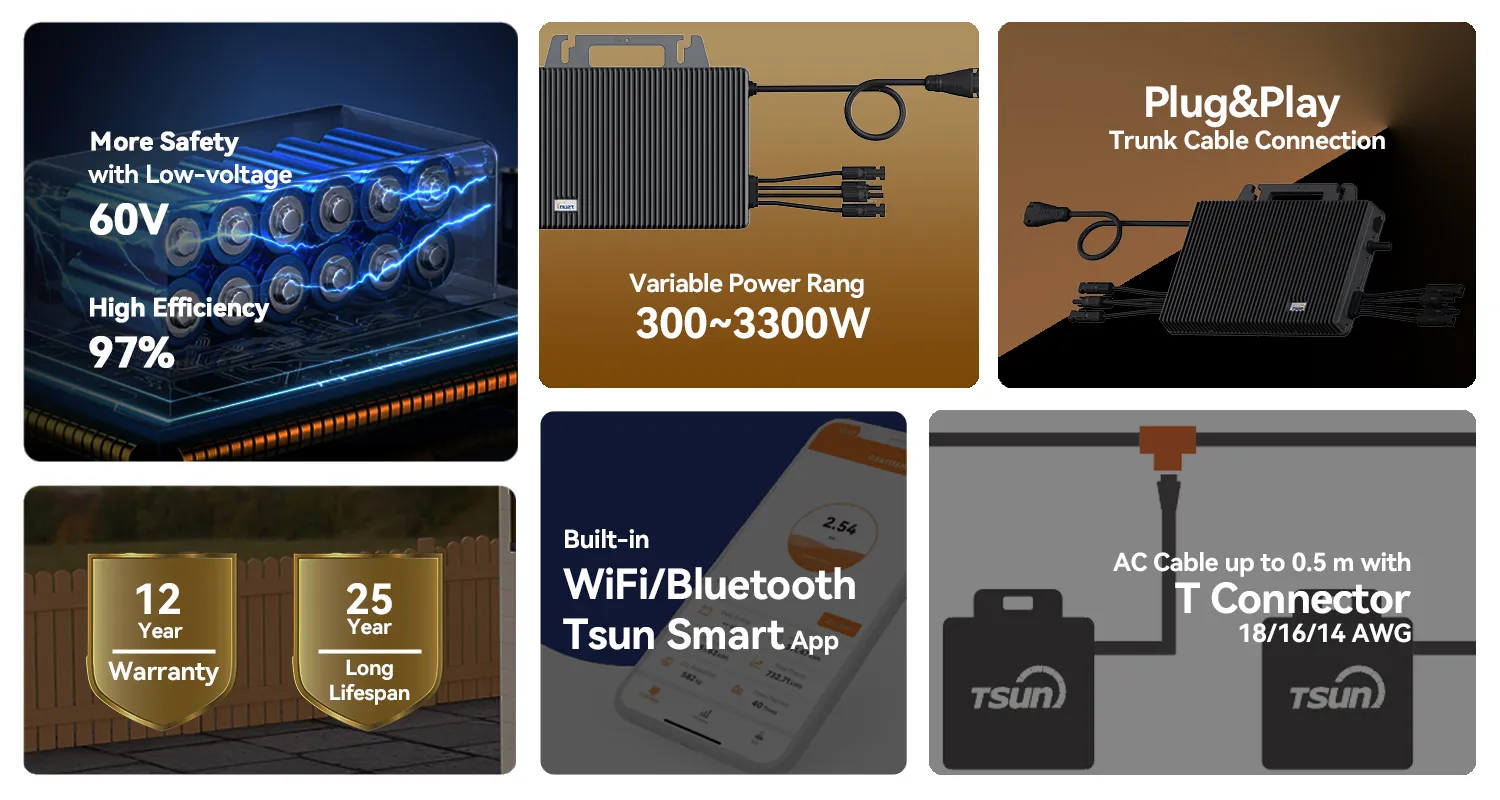Easy Solar Kit (with microinverter)
 LEARN DETAILS
LEARN DETAILS
 News
News
Table of contents
Understanding Micro Inverter Systems
In the rapidly evolving world of renewable energy, solar power stands out as one of the most promising sources of clean energy. Among the various technologies that facilitate solar energy conversion, micro inverter systems have gained significant attention for their efficiency and effectiveness. This article delves into what micro inverters are, how they function, and their advantages compared to traditional inverter systems.
What Are Micro Inverters?
Micro inverters are compact devices used in solar photovoltaic (PV) systems that convert direct current (DC) generated by solar panels into alternating current (AC). Unlike traditional string inverters that connect multiple panels in series, micro inverters are installed on each individual solar panel. This innovative design allows for independent operation of each panel, maximizing energy harvest and overall system efficiency.
How Do Micro Inverters Work?
The primary function of a micro inverter is to optimize the energy output of each solar panel. When sunlight hits a solar panel, it generates DC electricity. The micro inverter attached to the panel converts this DC electricity into AC electricity, which is the form of energy used in most homes and by the electrical grid. By processing the output of each panel individually, micro inverters can adjust to differences in shading, dirt, or other factors that might affect panel performance.
For example, if one solar panel is partially shaded by a tree, the micro inverter will allow the other unshaded panels to operate at their maximum capacity, rather than reducing the output of the entire string of panels as would occur with a string inverter. This individual panel-level optimization translates to higher overall energy yields for the solar PV system.
Advantages of Micro Inverter Systems

1. Higher Energy Production The individual optimization of each panel ensures that the system generates the maximum possible energy. In scenarios where some panels are shaded or facing different directions, micro inverters excel by allowing each panel to perform independently.
2. Easier System Monitoring Micro inverters offer enhanced monitoring capabilities. Many systems come equipped with monitoring software that allows users to track the performance of each panel from a smartphone or computer. This real-time data can help identify underperforming panels and facilitate maintenance.
3. Increased System Lifespan Micro inverters typically have longer lifespans than traditional string inverters, which often need to be replaced after about five to ten years. Many micro inverters come with 25-year warranties, reflecting their durability and reliability.
4. Scalability Micro inverter systems are easier to scale. Homeowners can start with a smaller solar installation and add more panels with micro inverters over time without significant redesign or compatibility issues.
5. Safety Features Micro inverters enhance the safety of solar panel systems. Since they operate at a lower voltage compared to string inverters, there’s a reduced risk of electrical hazards. Additionally, they often incorporate built-in shutdown features that can activate in case of a fault, further enhancing safety.
Conclusion
Micro inverter systems represent a significant advancement in solar technology that caters to the growing demand for efficient and reliable renewable energy solutions. Their ability to optimize each solar panel's performance individually not only increases energy production but also offers enhanced monitoring, easier scalability, and improved safety features. As the world continues to pivot toward sustainable energy sources, micro inverters will likely play a crucial role in optimizing solar energy installations and making solar power more accessible and efficient for homeowners everywhere. Embracing this technology can lead to significant long-term savings and contribute positively to environmental sustainability.

